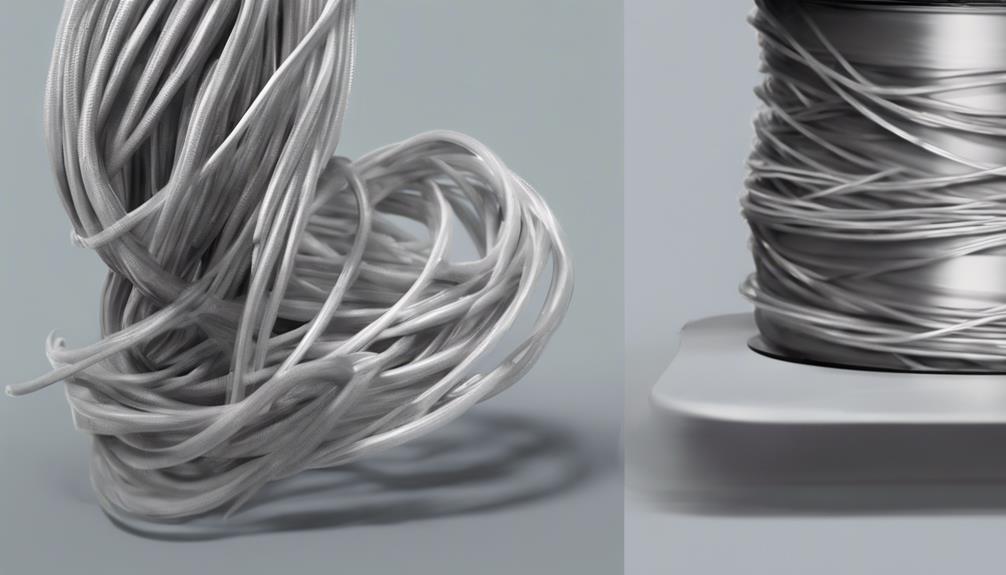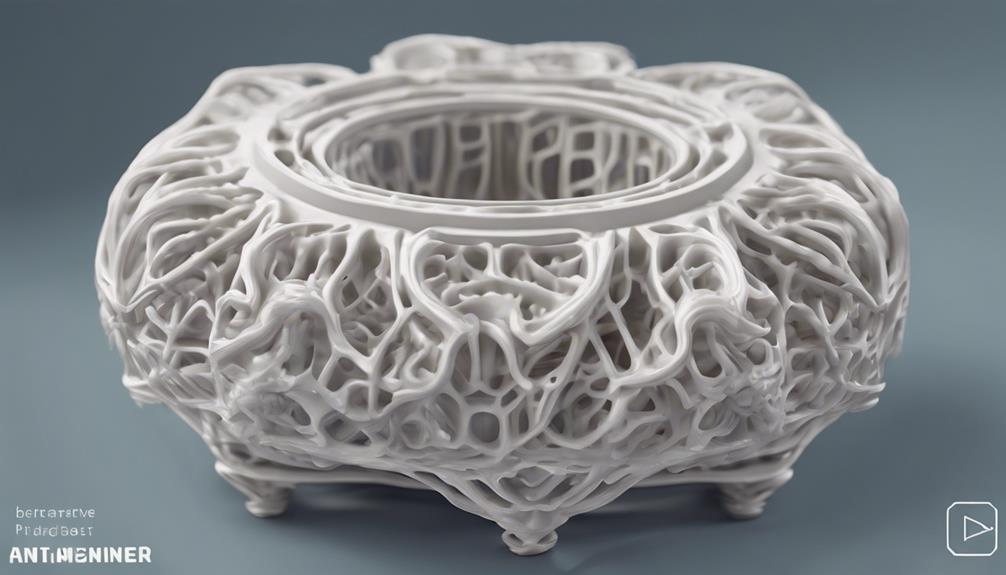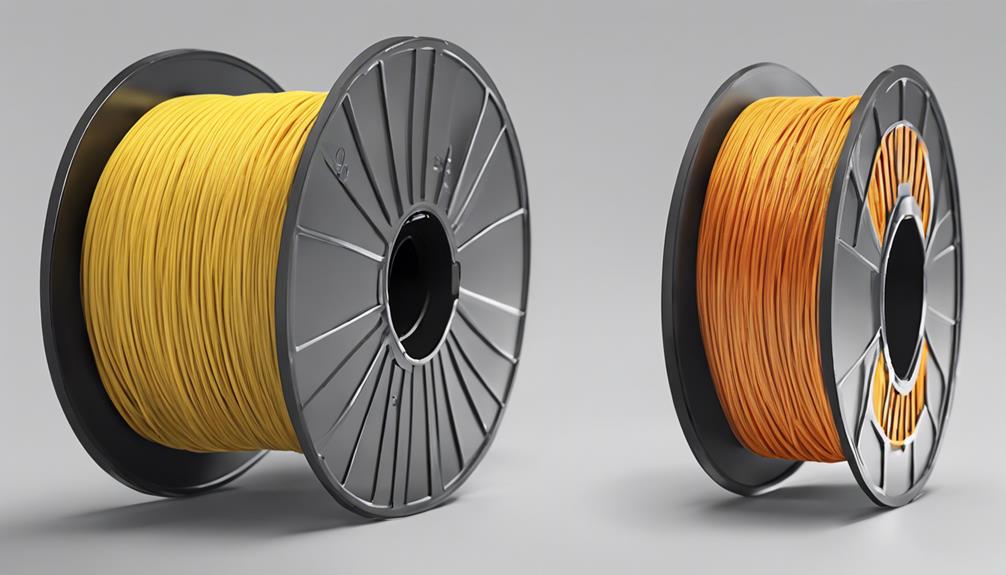The emergence of PLA+ filament has prompted a reevaluation of conventional 3D printing materials, introducing a new standard of strength and durability. The undisclosed additives in PLA+ have stirred curiosity among industry experts, hinting at a breakthrough that surpasses the limitations of traditional PLA. As the demand for more resilient and visually appealing prints grows, the exploration of PLA+ and its potential applications becomes increasingly intriguing. The implications of this discovery extend beyond the domain of 3D printing, sparking conversations about innovation and advancement in material science.
Strength and Durability Enhancements

The incorporation of undisclosed additives in PLA+ filament results in notable improvements in both strength and durability compared to traditional PLA. These additives enhance the overall structural integrity of the printed parts, making them less prone to breaking or warping.
PLA+ exhibits a higher tensile strength, allowing for more robust and durable prints that can withstand greater stress and impact. Additionally, the improved layer adhesion of PLA+ contributes to its enhanced durability, ensuring that the layers bond securely and create a more solid object.
With these advancements, PLA+ offers manufacturers and creators a reliable filament option for producing high-quality, long-lasting 3D prints with superior strength and durability.
Improved Print Quality
Enhanced by undisclosed additives, PLA+ filament exhibits superior print quality compared to traditional PLA filaments. The improved print quality of PLA+ is evident in various aspects:
- Enhanced strength and durability
- Better layer adhesion
- Superior overhang performance
- Reduced stringing
- Higher precision in prints
These qualities make PLA+ a preferred choice for 3D printing enthusiasts looking to achieve high-quality prints with improved structural integrity and finer details.
The unique formulation of PLA+ enables it to outperform standard PLA filaments regarding print quality, making it a versatile option for a wide range of printing projects.
Enhanced Surface Finish

Utilizing a specialized formulation, PLA+ filament offers a superior surface finish compared to traditional PLA filaments. The enhanced surface finish of PLA+ results in a smoother and glossier appearance, providing a more aesthetically pleasing final product.
This improved finish is advantageous for projects where visual appeal is essential, such as prototypes, artistic creations, or functional objects. Compared to standard PLA, which may require post-processing techniques to achieve a similar level of smoothness, PLA+ minimizes the need for additional finishing work.
The enhanced surface finish of PLA+ also contributes to its overall strength and durability, making it a preferred choice for applications requiring both visual appeal and structural integrity.
Optimal Printing Parameters
Building on the discussion of PLA+ filament's enhanced surface finish, understanding the best printing parameters is key to achieving high-quality prints with this advanced material. To optimize your printing process, consider the following parameters:
- Print Temperature: Adjust gradually when switching to PLA+.
- Temperature Tower Testing: Test different temperatures for peak results.
- Extrusion Temperatures: PLA+ requires slightly higher temperatures.
- Glossy Finish: PLA+ offers a glossier finish compared to standard PLA.
- Filament Variability: Specific PLA+ filaments may vary in glossiness, necessitating individual testing.
Comparative Analysis With Standard PLA

Conducting a comparative analysis between PLA+ filament and standard PLA reveals notable distinctions in their properties and performance. PLA+ offers enhanced strength, durability, and layer adhesion compared to standard PLA. It falls between standard PLA and ABS when considering properties, providing improved overhang properties, less stringing, better flexibility, and higher tensile strength. PLA+ also exhibits a glossy finish, while standard PLA has a matte appearance.
Additionally, PLA+ can withstand higher temperatures, has better layer adhesion, and prints bridges and overhangs with greater precision. The printing temperature for PLA+ is slightly higher than that of standard PLA, requiring adjustments in settings when switching between the two filaments. These differences highlight the superior qualities of PLA+ over standard PLA in various printing applications.
Frequently Asked Questions
Can Pla+ Filaments Be Used in All 3D Printers?
PLA+ filaments can generally be used in most 3D printers that support PLA. However, due to slight variations in printing temperature requirements and properties among different PLA+ formulations, it is advisable to check compatibility with your specific 3D printer model for best results.
How Does Pla+ Handle Intricate Designs?
PLA+ filament excels in handling intricate designs due to its enhanced strength, durability, and improved overhang properties. Its ability to withstand higher temperatures and offer smoother finishes make it a reliable choice for intricate 3D prints.
Does Pla+ Require a Heated Bed for Printing?
While PLA+ does not strictly require a heated bed for printing, it is advantageous to use one for the best results. A heated bed can improve bed adhesion, reduce warping, and enhance print quality, especially with larger or complex prints.
Is Post-Processing Necessary for Pla+ Prints?
Post-processing for PLA+ prints is generally not necessary due to its enhanced qualities. However, for achieving specific finishes like smoothing layer lines or adding extra shine, post-processing techniques such as sanding or polishing may be considered.
Can Pla+ Be Easily Painted or Post-Processed?
PLA+ can be easily painted or post-processed due to its enhanced qualities of strength, durability, and smoother finish. It offers improved overhang properties and flexibility, making it suitable for various finishing techniques. Adjusting temperatures gradually is recommended for best results.
Conclusion
To sum up, the ideal printing parameters make PLA+ filament an excellent choice for a variety of projects. Its exceptional strength and durability, improved print quality, and enhanced surface finish set it apart from traditional PLA.
The incorporation of undisclosed additives has truly enhanced the capabilities of PLA+, positioning it as a game-changer in the 3D printing industry. As the saying goes, 'With PLA+, the possibilities are endless.'